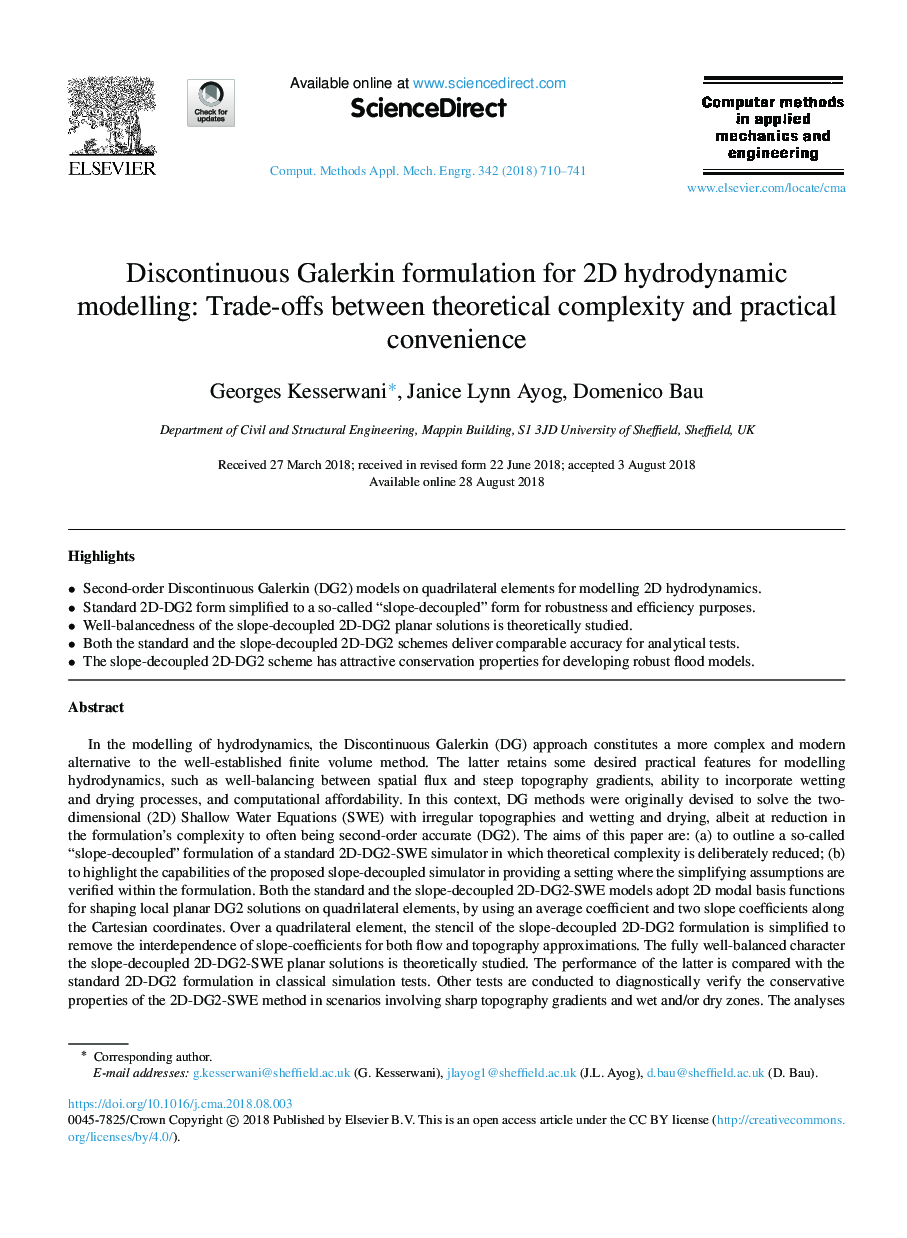| Article ID | Journal | Published Year | Pages | File Type |
|---|---|---|---|---|
| 9952348 | Computer Methods in Applied Mechanics and Engineering | 2018 | 32 Pages |
Abstract
In the modelling of hydrodynamics, the Discontinuous Galerkin (DG) approach constitutes a more complex and modern alternative to the well-established finite volume method. The latter retains some desired practical features for modelling hydrodynamics, such as well-balancing between spatial flux and steep topography gradients, ability to incorporate wetting and drying processes, and computational affordability. In this context, DG methods were originally devised to solve the two-dimensional (2D) Shallow Water Equations (SWE) with irregular topographies and wetting and drying, albeit at reduction in the formulation's complexity to often being second-order accurate (DG2). The aims of this paper are: (a) to outline a so-called “slope-decoupled” formulation of a standard 2D-DG2-SWE simulator in which theoretical complexity is deliberately reduced; (b) to highlight the capabilities of the proposed slope-decoupled simulator in providing a setting where the simplifying assumptions are verified within the formulation. Both the standard and the slope-decoupled 2D-DG2-SWE models adopt 2D modal basis functions for shaping local planar DG2 solutions on quadrilateral elements, by using an average coefficient and two slope coefficients along the Cartesian coordinates. Over a quadrilateral element, the stencil of the slope-decoupled 2D-DG2 formulation is simplified to remove the interdependence of slope-coefficients for both flow and topography approximations. The fully well-balanced character the slope-decoupled 2D-DG2-SWE planar solutions is theoretically studied. The performance of the latter is compared with the standard 2D-DG2 formulation in classical simulation tests. Other tests are conducted to diagnostically verify the conservative properties of the 2D-DG2-SWE method in scenarios involving sharp topography gradients and wet and/or dry zones. The analyses conducted offer strong evidence that the proposed slope-decoupled 2D-DG2-SWE simulator is very attractive for the development of robust flood models.
Related Topics
Physical Sciences and Engineering
Computer Science
Computer Science Applications
Authors
Georges Kesserwani, Janice Lynn Ayog, Domenico Bau,
